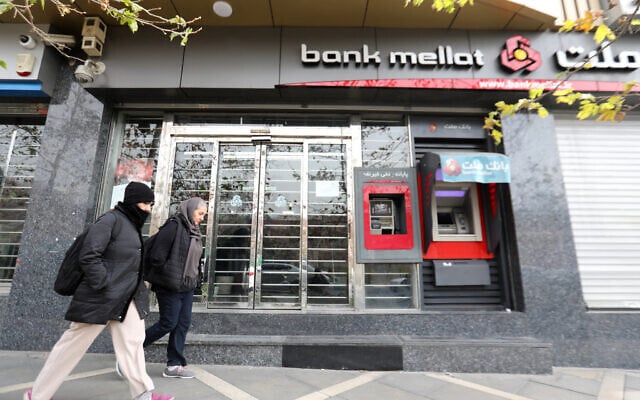[[{“value”:”
An energy crisis in Iran has left its leadership scrambling to find a solution after schools and government institutions across the country were forced to close their doors last week due to widespread power outages that Tehran, in its current state, is ill-equipped to deal with.
After a summer of blackouts, the energy crisis in the Islamic Republic has become exacerbated by harsh winter conditions, and severe cold, snow and air pollution have added to the woes of an energy sector unable to deal with seasonal surges due to years of underinvestment and sanctions.
The New York Times reported on Saturday, however, that one other factor has contributed to the dire state of the country’s energy supplies — a pair of attacks on major gas pipelines back in February, which were attributed to Israel by the Times.
The attacks disrupted the flow of gas to millions of people across Iran and caused widespread outages across five separate provinces.
Israel did not comment on the blasts at the time, and Iran’s oil minister Javad Owji also appeared hesitant to place blame.
According to the Times, the Iranian government attempted to minimize the impact of the damage caused to the gas pipelines by dipping into emergency gas reserves. While the strategy worked in the short term, preventing disruptions for millions of people, it has left the government with a depleted energy supply that, despite Iran’s vast natural gas and oil reserves, it is struggling to replenish.
Iran’s inability to bounce back from the crisis is due to several problems, the Times stated, including “mismanagement, corruption, and cheap prices that fuel wasteful consumption.”

Heavy sanctions placed on Iran by the West over its nuclear program have also led to an inability for the country to modernize its energy sector, analysts told the Times, as it lacks the investors needed to be able to do so.
Tehran insists its nuclear program is peaceful, despite the fact that it involves uranium enrichment to near weapons-grade levels, beyond civilian necessity.
In 2015, during Iran’s pact with world powers to roll back the program in exchange for sanctions relief, the rial was at 32,000 to $1.
On July 30, the day that Iran’s President Masoud Pezeshkian, elected on a promise to ease the sanctions, was sworn in and began his term, the rate was 584,000 to $1.
US president-elect Trump, during his first term in office, unilaterally withdrew the US from the nuclear accord in 2018, and imposed a “maximum pressure” campaign of sanctions.
Iran denies seeking a nuclear weapon, but US intelligence agencies and the IAEA say the country had an organized military nuclear program up until 2003, and Israel contends it never truly abandoned the program.
The impact of the rolling power outages already seemed to be felt across Iran’s manufacturing industry, as one engineer at a household appliance production factory told the Times that production costs had already risen as a result of the outages.
He feared that the factory could soon fire people in an attempt to keep up with costs by downsizing.
Compounding Iran’s problems, the rial fell to its lowest level in history last week, losing more than 10% of its value since Donald Trump won the US presidential election in November.
The rial traded at 777,000 rials to the dollar, traders in Tehran said, down from 703,000 rials on the day Trump won.
Iran’s Central Bank has in the past flooded the market with more hard currencies in an attempt to improve the rate.
Tehran’s domestic troubles follow a series of blows on the international stage, as its regional proxy groups, chief among them Hezbollah in Lebanon, have been battered by Israel’s year-long military campaign.
Hezbollah began launching near-daily attacks on Israel on October 8, 2023, in support of its ally Hamas in Gaza, also backed by Iran, which launched a deadly cross-border onslaught in southern Israel on October 7 last year, resulting in the ongoing war.
The conflict between Israel and Iran’s Lebanon-based proxy escalated in September when an airstrike in Beirut killed longtime Hezbollah leader Hassan Nasrallah and Israel launched a ground incursion into southern Lebanon.
The two sides agreed to a shaky ceasefire in late November, but Iran was dealt one more blow when former Syrian president Bashar al-Assad was ousted by rebel forces, just two weeks after they launched a new offensive against his regime.
The post Iran plagued by energy crisis partially caused by strikes attributed to Israel appeared first on Energy News Beat.
“}]] 
